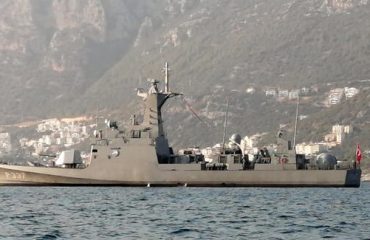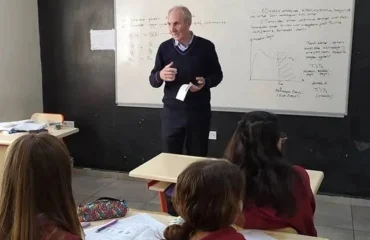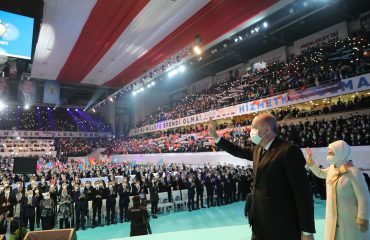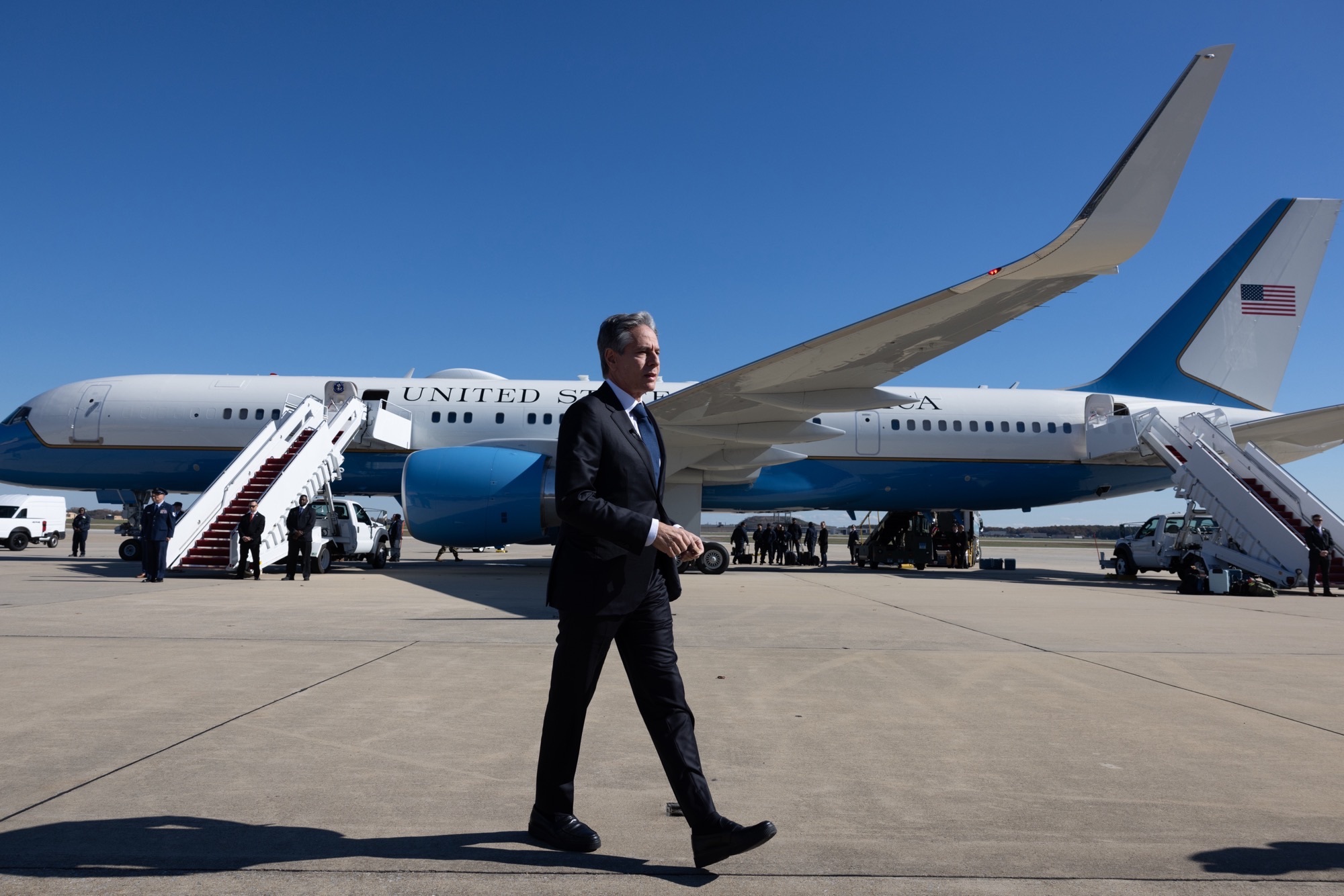
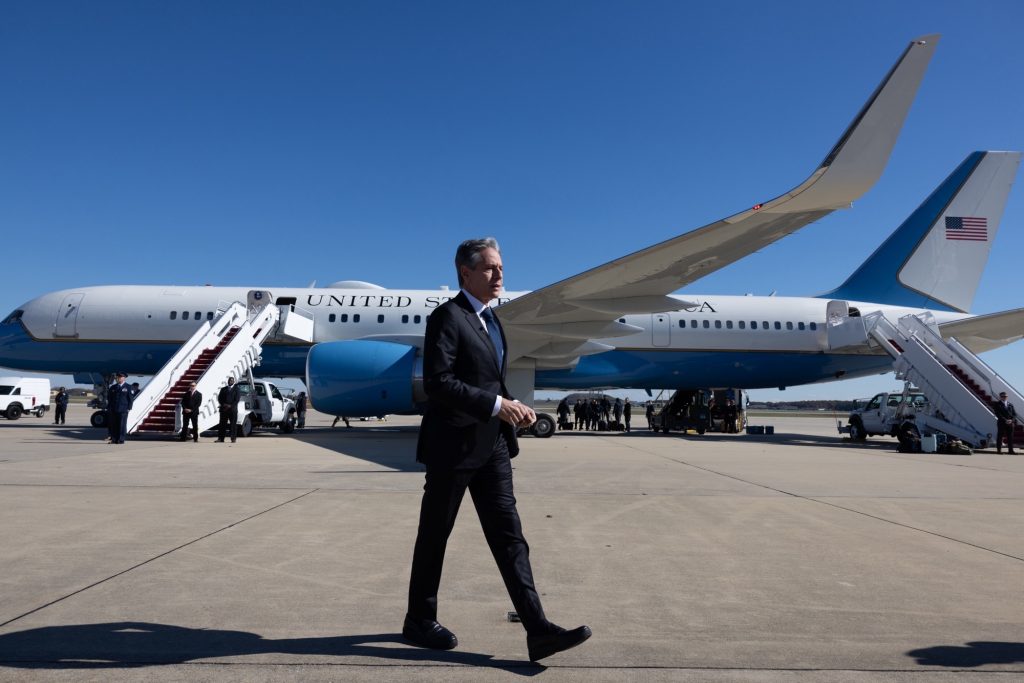
It would be a geostrategic fallacy to see US Secretary of State Antony Blinken’s November 2-10 tour of the Middle East and Asia as solely about the Gaza Crisis. From a broader perspective, it appears that the US is preparing to apply the “Containment” strategy that resulted in the collapse of the Soviet Union in the Cold War, this time on a much broader scale, against China and Russia.
It would be a geostrategic fallacy to see US Secretary of State Antony Blinken’s November 2-10 tour of the Middle East and Asia as solely about the Gaza Crisis. Likewise, it would be an exaggeration to say that the US and the European Union have put Ukraine aside because of its support for Israel, even at the expense of the Palestinian people. From a broader perspective, it appears that the US is preparing to apply the “Containment” strategy that resulted in the collapse of the Soviet Union in the Cold War, this time on a much broader scale, against China and Russia.
Seeing Blinken’s recent trip in the context of such a containment strategy will help us to better understand what is going on. The stops of the trip were announced as Israel, Jordan, Palestine (West Bank), the Greek Republic of Cyprus, Iraq, Turkey, Japan, South Korea and India. If you look at the map, you can see that this route draws a line of geographical and political, or geostrategic, containment of Russia and China.
Let’s elaborate a bit.
What was the containment policy?
The policy of containment, which provided the ideological and political impetus for NATO’s founding in 1949, was, as the name implies, aimed at encircling and containment of the Soviet Union and the Eastern European countries allied to Moscow.
In Europe, the frontline countries were West Germany, Italy, Denmark, Norway, still officially under US occupation, and the two nuclear powers behind the frontline, Britain and France. Canada, with its neighborhood in the Arctic, acted as a shield. Turkey and Greece, which joined NATO in 1952, together with Italy, formed the Southern Flank; the Black Sea, the Straits and the Aegean were also of strategic importance for the Middle East and the Eastern Mediterranean. The Turkey-Israel-Iran (Trident) intelligence network and the Turkey-Iran-Pakistan (CENTO) security cooperation extended NATO’s South Wing through Turkey to the Soviet borders in Central Asia.
Soviet collapse and aftermath
In China, the Communist Party rule under Mao Zedong made containment difficult, but the ideological divisions between Moscow and Beijing created an important opportunity. The 1975 defeat in Vietnam and the 1979 Islamic Revolution in Iran opened a breach in the containment policy, but US President Richard Nixon’s 1972 trip to China, which deepened the Moscow-Beijing rift, was a significant enough historical step.
In the face of the Soviet invasion of Afghanistan, the US, China, Saudi Arabia and Pakistan formed an unbelievable coalition. The Soviets collapsed in 1992, triggered by the defeat in Afghanistan. The mujahideen trained and nurtured by that coalition of four have become the scourge of the world today, from the Taliban to al-Qaeda to ISIS, but the containment policy was successful for the US and NATO.
Germany was united. Eastern Europe and the Baltic states became members of NATO and the EU. Weakened Russia was forced to withdraw from the Middle East. The two US operations in Iraq strengthened the US presence in the Middle East to the detriment of Iran and in favor of Israel.
Changing balances
However, Russia’s rise to power under Vladimir Putin and China’s rise to become the world’s second largest economic and military power in the 2000-2020 period have changed the situation.
The US, NATO and the EU failed to respond to Russia’s moves in Georgia in 2008 and Ukraine in 2014 (with the annexation of Crimea). Meanwhile, the Arab Spring uprisings and the Syrian civil war brought Russia back to the Middle East and the Eastern Mediterranean. This time, China and Russia began to cooperate, not on ideological grounds, but on the basis of anti-US cooperation.
In 2014, after the annexation of Crimea, the US cooperated against ISIS in Syria with the Syrian branch of the PKK, which it considers a terrorist organization, rather than its NATO ally Turkey; President Tayyip Erdoğan saw the US behind the 2016 military coup attempt; Turkey’s purchase of S-400 missiles from Russia; and the US’s exclusion of Turkey from the F-35 program actually opened a rift between the two countries in Russia’s favor.
Turkey’s strategic autonomy in its relations with Russia, China and Iran, while fulfilling its NATO obligations, has pushed the US and the European governments under its influence to search for new options. This includes rethinking the containment line.
India-Israel line
India, Saudi Arabia and Israel were the three key countries in the India-Middle East-Europe Economic Corridor project, from which Turkey was excluded at the last G20 meeting in India. A simple observation of the map would have shown that this ambitious project aims to go around the China, Iran and Russia energy corridor.
However, the situation changed on October 7 when Hamas attacked Israel and Israel, with Western support, rained fire on Gaza. So much so that Biden emphasized the importance of this project in his October 19 speech in open support of Israel (although for some reason it did not receive attention in the Turkish media). This project is unlikely to materialize until the Gaza crisis subsides and a new balance is established in Palestine, possibly involving Turkey, Egypt and Saudi Arabia.
As for Ukraine. Yes, Western governments tend to shift their attention (and money) from Ukraine to Israel. But this does not mean that Ukraine has been forgotten. In fact, it can be seen as a means of forcing Kiev and the Volodymyr Zelensky administration to forget about the territories occupied by Russia and, in return, come under the umbrella of the EU and NATO.
New containment works?
Will the new containment strategy signaled by the US with the Blinken visit work?
The world is not the world of the 1960s, 1980s and 2000s. China is getting stronger despite its economic problems. Its involvement in the Gaza Crisis shows that its interest is no longer limited to the Pacific region or Africa for energy purposes. In the Pacific, the China-Russia alliance has an aggressive armed power in North Korea, which is open to their manipulation.
The US is still the world’s biggest financial power and by far the biggest military power. But it is no longer the omnipotent political power it was in the 1960s, 1990s and 2020s.
The politics of containment, within the framework of the resurgent concept of the nation-state, now means partners each seeking strategic autonomy in proportion to their power.
But these challenges may not deter the US. Biden and the military-industrial complex behind him may put all the cards on the table and try to push all the buttons at once to win the November 2024 elections.
It is a dangerous course, it is necessary to see it.
